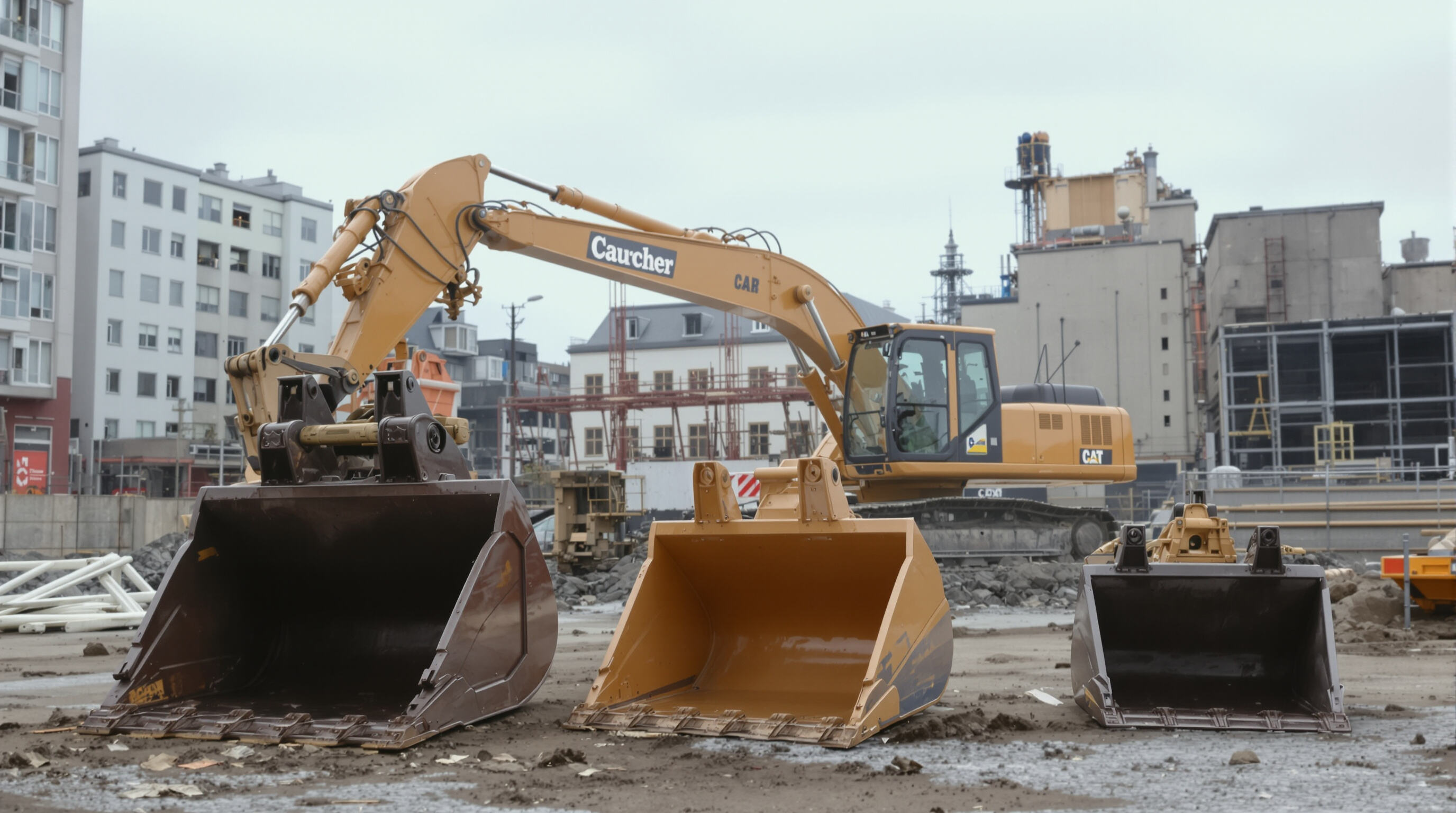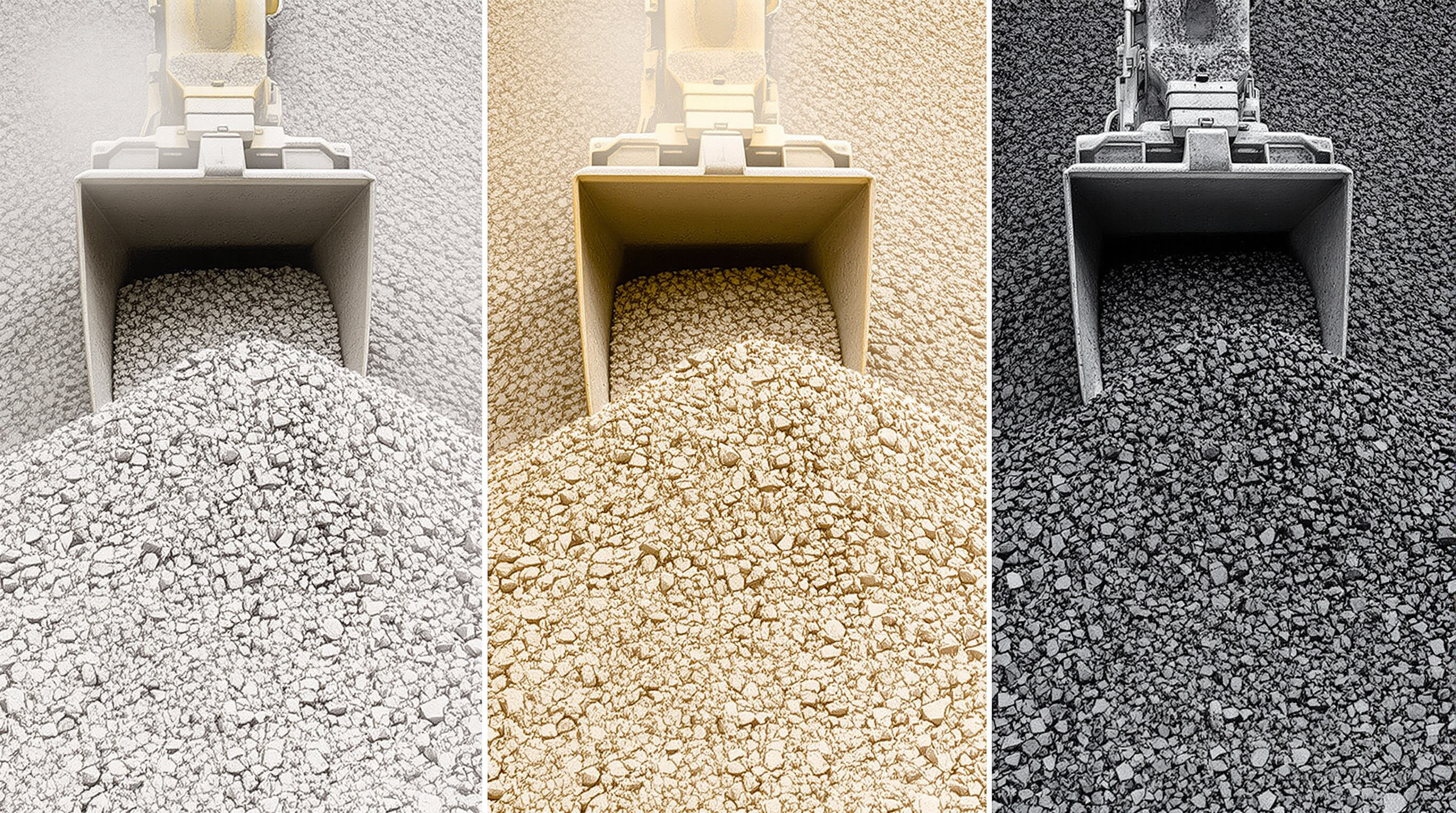Match Crusher Bucket to Excavator Specifications and Hydraulic Capacity
Evaluate Excavator Weight Class and Carrier Compatibility
Getting the right crusher bucket size for your excavator based on its weight class matters a lot for keeping things stable and operating safely. Machines weighing less than 12 tons work best with buckets around or below 0.3 cubic meters. These smaller buckets help keep everything balanced and put less strain on the excavator arm. When we look at bigger machines in the 20 to 30 ton range, they generally handle buckets between 0.8 and 1.2 cubic meters pretty well. This size range boosts productivity without putting too much load on the equipment. According to Equipment Maintenance Journal from last year, about two thirds of all early bucket failures come down to mismatched weight ratios. Before making a purchase, it's smart to check what the manufacturer says about GVW specs and also measure how far apart the stick and bucket are supposed to be. This helps make sure everything fits together properly.
Ensure Hydraulic System Compatibility: Flow, Pressure, and Couplings
Getting the hydraulic alignment right on crusher buckets is absolutely critical. Most units work best when they get somewhere around 100 to 220 liters per minute flow rate, while pressure levels usually need to be between 180 and 350 bars. A recent study from Fluid Power Systems in 2024 showed something pretty shocking actually – almost half (that's 41%) of all crusher bucket failures come down to mismatched hydraulic systems. When selecting quick couplers, operators should look for ones that can handle at least 90% of what their excavator puts out in terms of max hydraulic pressure. And don't forget to check if those auxiliary circuits match up properly with ISO 16028 certified parts. This kind of attention to detail makes all the difference when it comes to getting consistent performance out of these heavy duty machines day after day.
Avoid Overloading: Align Bucket Size and Weight with Machine Performance
Oversized buckets reduce swing efficiency by up to 30% and can elevate hydraulic fluid temperatures beyond 82°C, risking system damage. Follow these guidelines for optimal pairing:
| Excavator Weight | Max Bucket Weight | Recommended Crushing Force |
|---|---|---|
| 8-15 tons | 1,200–1,800 kg | 90–140 kN |
| 15–25 tons | 1,800–3,000 kg | 140–220 kN |
| 25–40 tons | 3,000–4,500 kg | 220–320 kN |
Field tests show properly sized buckets increase material throughput by 22% in quarry applications compared to overloaded setups.
Select the Correct Crusher Bucket Size Based on Application and Carrier Model

Crusher Bucket Sizing Guidelines by Excavator Weight Class
Matching bucket size to excavator weight ensures stable, efficient operation. Compact machines (6–12 tons) work best with 0.25–0.35 m³ buckets under 2,000 kg, while mid-size units (16–25 tons) pair well with 0.55–0.85 m³ models. Larger carriers (30–45 tons) require 1.2–1.6 m³ buckets to handle high-volume tasks efficiently.
| Carrier Weight Class | Ideal Bucket Capacity | Max Hydraulic Flow | Common Applications |
|---|---|---|---|
| 6-12 tons | 0.25–0.35 m³ | 130 L/min | Urban demolition, light recycling |
| 16-25 tons | 0.55–0.85 m³ | 220 L/min | Quarry prep, concrete crushing |
| 30-45 tons | 1.2–1.6 m³ | 265 L/min | Mining, large-scale rock processing |
Mismatched hydraulic flow accounts for 78% of system failures in crusher bucket operations (2023 equipment efficiency study).
Field Case Study: Proper Sizing Prevents Downtime and Maximizes Output
A highway construction team improved efficiency by switching from a 1.4 m³ to a 0.9 m³ bucket on their 22-ton excavators. Throughput rose from 50 to 68 tons/hour, fuel use dropped 19%, and unplanned maintenance events fell by 42% (Heavy Equipment Journal, 2023). The optimized match enhanced weight distribution and reduced strain on hydraulic components.
Balance Between Bucket Capacity and Project Scale Requirements
For short-term residential jobs (<2 weeks), choose buckets at 20–30% below your excavator’s maximum capacity to improve maneuverability. Large infrastructure projects benefit from buckets operating at 85–95% of hydraulic capacity to sustain output. Account for material density—granite requires 15–20% smaller bucket volumes than concrete to stay within safe load limits.
Optimize Crushing Performance by Material Type and Output Needs

Choose Bucket Design Based on Material Hardness and Composition
Getting good results from crushing operations really comes down to matching the right bucket design with what kind of material needs processing. When dealing with concrete, operators need those extra strong jaws plus teeth made from hardened steel to handle the job. Granite and other rough stuff call for something even tougher though - usually tungsten carbide inserts work best against all that wear and tear. Materials that are softer, think asphalt or clay, actually do better with bigger feed openings since they tend to get stuck otherwise. And then there's the tricky stuff like concrete mixed with rebar where special setups make all the difference. Machines with counter rotating jaws paired with screening grids help separate out those unwanted bits much more effectively. According to recent industry reports, around a quarter of the global market for mining and mineral processing equipment goes towards crushing systems alone. That number shows just how critical it is for engineers to tailor their designs specifically for different materials when building these machines.
Adjust Output Size and Throughput for Specific Project Demands
Adjusting the gap between jaws along with changes to hydraulic pressure lets operators control the output size ranging from 20 to 120 millimeters. When it comes to recycling applications, most facilities need smaller aggregate sizes typically below 50 mm so they can be reused in asphalt mixtures. On the other hand, primary quarries usually work better with bigger pieces measuring around 80 mm or more which are suitable for further processing steps. Moisture levels also play a big role here since when materials get wetter by about 15%, production throughput tends to drop somewhere around 20% because wet materials stick together more easily. The latest variable flow hydraulic systems make all the difference though. These advanced setups let machines switch instantly between different modes fine grinding at approximately 12 to 15 liters per minute versus coarse crushing requiring 25 to 30 liters per minute, making equipment much more versatile across various operational needs.
Maximize Efficiency in Recycling, Demolition, and Quarry Applications
Crusher buckets that rotate all the way around 360 degrees really cut down on how often workers need to move them around in cramped demolition areas. We've seen some sites reduce their downtime by almost half with these rotating models. When it comes to quarries, there are special versions equipped with overload protection valves that keep the pressure steady even when dealing with massive amounts of limestone day after day. Recycling operations benefit too from built-in dust suppression systems. These systems not only help companies stay within those strict air quality regulations where particulate levels must stay below 10 micrograms per cubic meter, but they also make working conditions safer for everyone onsite. Real world testing has shown that buckets designed specifically for certain applications can boost productivity by roughly 35 percent each day compared to regular off-the-shelf models when handling all sorts of different materials together.
Assess Build Quality and Duty Cycle: General vs. Heavy-Duty Crusher Buckets
Understanding Duty Cycles: Daily Use, Intensity, and Wear Expectations
How long equipment lasts really comes down to whether the bucket construction matches what it's actually being used for day to day. Standard duty buckets work fine for those occasional jobs around the site, things like knocking down walls or breaking up old concrete when they're only needed maybe six to eight hours each week. But when operations kick into high gear, running non stop for over forty hours a week while crushing tough materials like granite or basalt, that's where the heavy duty versions shine. According to field tests from last year, these tougher buckets lined with HARDOX450 steel can hold up three times longer at quarries compared to regular ones. That translates to real money saved too, with operators reporting around eighteen thousand five hundred dollars less spent yearly on replacements for each machine.
Key Features That Improve Durability and Crusher Productivity
Premium buckets include critical enhancements that extend service life:
| Feature | General-Duty | Heavy-Duty |
|---|---|---|
| Base Material | 400HB Steel | HARDOX450/NM400 Alloy |
| Wear Plate Thickness | 15–20mm | 25–30mm + Replaceable Tips |
| Reinforcement | Spot Welding | Full-Penetration Seams |
These upgrades support crushing capacities of 380–520 tons/hour in severe-duty environments with structural failure rates below 2%.
Cost vs. Long-Term Value: High-End Buckets from Leading Manufacturers
Heavy duty buckets might cost anywhere from 35 to 50 percent more upfront, but according to some recent studies from 2023, these buckets actually save around seventeen thousand dollars in total costs over about seven years. What makes this possible? Well, top bucket makers have started using modular designs so workers can just replace parts like the tips or side plates instead of having to buy brand new buckets every time something wears out. This really matters for operations that handle over fifty thousand tons each year because replacing whole buckets constantly gets expensive fast.
Frequently Asked Questions
What factors should I consider when selecting a crusher bucket for my excavator?
Consider your excavator's weight class, hydraulic system compatibility (flow rate and pressure), and specific application needs.
How does oversized bucket capacity affect hydraulic systems?
Oversized buckets reduce efficiency and can elevate hydraulic fluid temperatures, potentially leading to system damage.
What are the benefits of using a heavy-duty crusher bucket?
Heavy-duty crusher buckets offer greater durability, particularly for constant use in severe conditions, potentially saving long-term maintenance costs.
Table of Contents
- Match Crusher Bucket to Excavator Specifications and Hydraulic Capacity
- Select the Correct Crusher Bucket Size Based on Application and Carrier Model
- Optimize Crushing Performance by Material Type and Output Needs
- Assess Build Quality and Duty Cycle: General vs. Heavy-Duty Crusher Buckets
- Frequently Asked Questions


